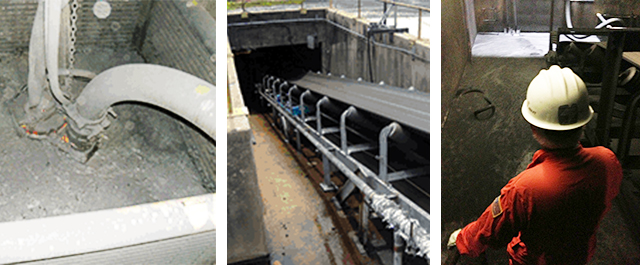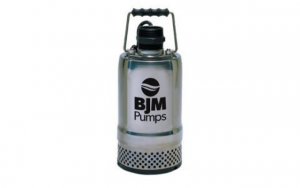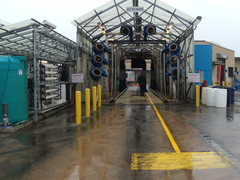Part of the petroleum refining process is separating distillates from residual oil after it goes through a vacuum distillation unit. These lighter grade petroleum products (hydrocarbon gases, naphtha, light and heavy gas oils, etc.) are separated from the oil in a coker unit. After distilling the desired petroleum by-products, the remaining carbonaceous solid residue is petroleum coke.
Petroleum coke, commonly referred to as “petcoke”, is over 90% carbon and gives off 5% to 10% more carbon dioxide than coal when burned. Petcoke is used as inexpensive fuel in offshore power generation, coal fired boilers, or in the steel and aluminum industries. American oil refineries, which produced over 61.5 million tons of petcoke in 2011, typically store petcoke on site awaiting pending sales or ship it to other companies who then store in large piles before selling this fuel source.
BJM Pumps supported a major bulk commodity handing facility and vessel loading terminal in Port Arthur, Texas, that specializes in exporting petroleum coke. When the raw petcoke is transported to this terminal in bottom dump railcars, the coke goes to a system of shakers, which breaks the petcoke into smaller chunks that are easier to transport on a conveyer system.
Below the shakers is the open conveyer shaft, which has a depth of 70 to 80 ft. below the ground. Due to the likelihood of rainwater entering the conveyer shaft, a large sump had been installed into the bottom of the shaft to make sure that rainwater could be pumped out to an existing retention pond. With the shakers directly above the bottom of the conveyer shaft, pieces of petroleum coke fall into the shaft and eventually washed into the sump – causing the sump pump to clog and fail.




